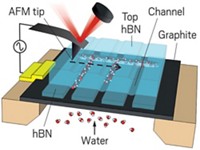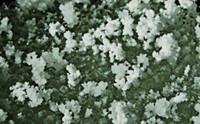Advertisement
Grab your lab coat. Let's get started
Welcome!
Welcome!
Create an account below to get 6 C&EN articles per month, receive newsletters and more - all free.
It seems this is your first time logging in online. Please enter the following information to continue.
As an ACS member you automatically get access to this site. All we need is few more details to create your reading experience.
Not you? Sign in with a different account.
Not you? Sign in with a different account.
ERROR 1
ERROR 1
ERROR 2
ERROR 2
ERROR 2
ERROR 2
ERROR 2
Password and Confirm password must match.
If you have an ACS member number, please enter it here so we can link this account to your membership. (optional)
ERROR 2
ACS values your privacy. By submitting your information, you are gaining access to C&EN and subscribing to our weekly newsletter. We use the information you provide to make your reading experience better, and we will never sell your data to third party members.
Education
Newscripts
Turning The Right Cheek, Sand Castle Building Tips
by Emily Bones
August 20, 2012
| A version of this story appeared in
Volume 90, Issue 34

Most people strike a pose and smile when they hear, “Say cheese.” When chemistry professors hear the phrase, it turns out they also do those things, but they frequently show the right side of their faces to the camera, according to researchers in Australia (PLoS One, DOI: 10.1371/journal.pone.0038940).
To come to that conclusion, the research team first turned to the Times Higher Education rankings of the world’s top 200 universities, says postdoc and team member Owen Churches of the University of South Australia, in Adelaide. Then, they randomly selected 30 schools from the list and visited each faculty member’s website, he adds. Of the 5,829 profile photos collected, 2,661 showed professors not favoring a particular side of the face. “We looked carefully,” Churches recalls.
From regression analysis, the team found that chemists and mathematicians more often show the same cheek as engineers do—the right one. “Everything was compared against the engineers,” Churches explains, because they are the largest discipline. English and psychology academics do not face the same way as engineers; they frequently show their left side instead.
Scientists have in the past determined that the right side of the human face is less emotionally expressive than the left side, Churches tells Newscripts. So the team decided to test the theory on academic profile pictures.
“There is a bias,” says Churches, who normally investigates how the hemispheres of the brain work, especially in people with a variety of psychological conditions. This new study was carried out, Churches says with delight, to pass the time while his group was settling into a new lab.
Professors in scientific fields tend to put photos on their academic websites that show their right cheek, the team concludes, because scientists want to be seen as “nonemotional rationalists.” So next time you’re in front of a camera, show off the cheek that expresses you best.
Lots of people are full of smiles while they’re at the beach. And now beachgoers have another reason to smile: A research team has scientifically determined how to make the perfect sand castle (Sci. Rep., DOI: 10.1038/srep00549).,/span>

The scientists, led by physics professor Daniel Bonn, found that sand is at its tower-building best when mixed with exactly 1% water by volume.
Architects have been building tall structures for centuries, says Bonn, a physics professor at the University of Amsterdam and a researcher at École de Chimie, in Paris. But sand has an important property that deviates from the norm: Without water, it behaves like a liquid (think sand in a hourglass). “You need water to make a good sand castle, all children know that,” Bonn says.
When water is added to sand, Bonn explains, “it forms little liquid bridges that glue the sand together.” Water’s high surface tension causes the “joining” of the granules.
The more water bridges formed, the stronger the material. Add too much water, Bonn adds, and the bridges begin to merge with each other, compromising the stability of the solid structure.
With the newly discovered optimum of 1% water and 99% sand, Bonn and his team were able to make sand structures according to an architect’s equations for constructing buildings, where the maximum height is dependent on the radius of the base.
According to Bonn, “Sand castle builders should also prefer the smaller sand from dunes to the granular sand from the sea.” Smaller grains, he explains, lead to a greater sand surface area, enabling more water bridges to form.
“The handling of granular materials consumes roughly 10% of the world’s energy consumption,” the researchers report. So this study might not benefit only beachgoers, it could lead to more efficient transport of materials.
Emily Bones wrote this week’s column. Please send comments and suggestions to newscripts@acs.org.





Join the conversation
Contact the reporter
Submit a Letter to the Editor for publication
Engage with us on Twitter